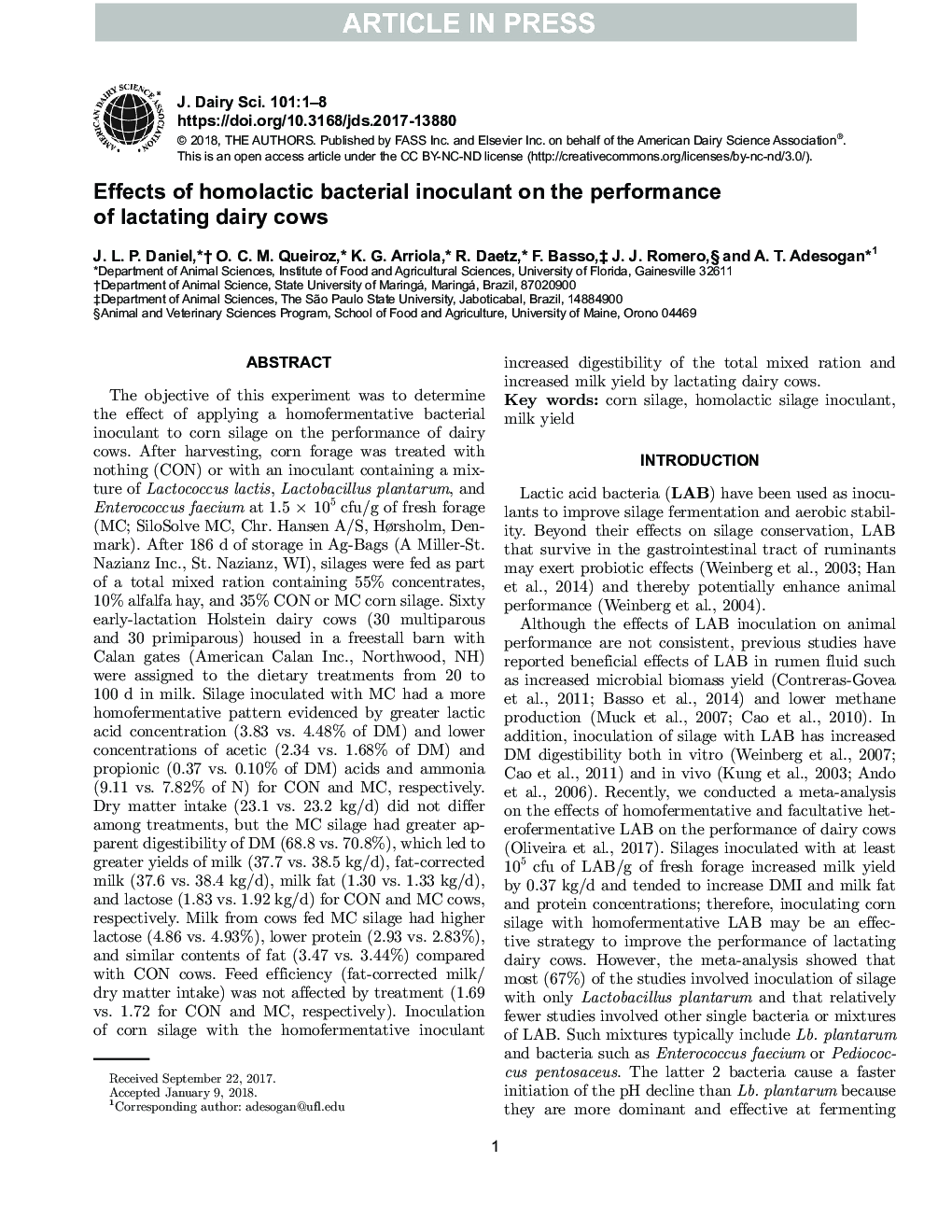| Article ID | Journal | Published Year | Pages | File Type |
|---|---|---|---|---|
| 8501124 | Journal of Dairy Science | 2018 | 8 Pages |
Abstract
The objective of this experiment was to determine the effect of applying a homofermentative bacterial inoculant to corn silage on the performance of dairy cows. After harvesting, corn forage was treated with nothing (CON) or with an inoculant containing a mixture of Lactococcus lactis, Lactobacillus plantarum, and Enterococcus faecium at 1.5 à 105 cfu/g of fresh forage (MC; SiloSolve MC, Chr. Hansen A/S, Hørsholm, Denmark). After 186 d of storage in Ag-Bags (A Miller-St. Nazianz Inc., St. Nazianz, WI), silages were fed as part of a total mixed ration containing 55% concentrates, 10% alfalfa hay, and 35% CON or MC corn silage. Sixty early-lactation Holstein dairy cows (30 multiparous and 30 primiparous) housed in a freestall barn with Calan gates (American Calan Inc., Northwood, NH) were assigned to the dietary treatments from 20 to 100 d in milk. Silage inoculated with MC had a more homofermentative pattern evidenced by greater lactic acid concentration (3.83 vs. 4.48% of DM) and lower concentrations of acetic (2.34 vs. 1.68% of DM) and propionic (0.37 vs. 0.10% of DM) acids and ammonia (9.11 vs. 7.82% of N) for CON and MC, respectively. Dry matter intake (23.1 vs. 23.2 kg/d) did not differ among treatments, but the MC silage had greater apparent digestibility of DM (68.8 vs. 70.8%), which led to greater yields of milk (37.7 vs. 38.5 kg/d), fat-corrected milk (37.6 vs. 38.4 kg/d), milk fat (1.30 vs. 1.33 kg/d), and lactose (1.83 vs. 1.92 kg/d) for CON and MC cows, respectively. Milk from cows fed MC silage had higher lactose (4.86 vs. 4.93%), lower protein (2.93 vs. 2.83%), and similar contents of fat (3.47 vs. 3.44%) compared with CON cows. Feed efficiency (fat-corrected milk/dry matter intake) was not affected by treatment (1.69 vs. 1.72 for CON and MC, respectively). Inoculation of corn silage with the homofermentative inoculant increased digestibility of the total mixed ration and increased milk yield by lactating dairy cows.
Keywords
Related Topics
Life Sciences
Agricultural and Biological Sciences
Animal Science and Zoology
Authors
J.L.P. Daniel, O.C.M. Queiroz, K.G. Arriola, R. Daetz, F. Basso, J.J. Romero, A.T. Adesogan,
